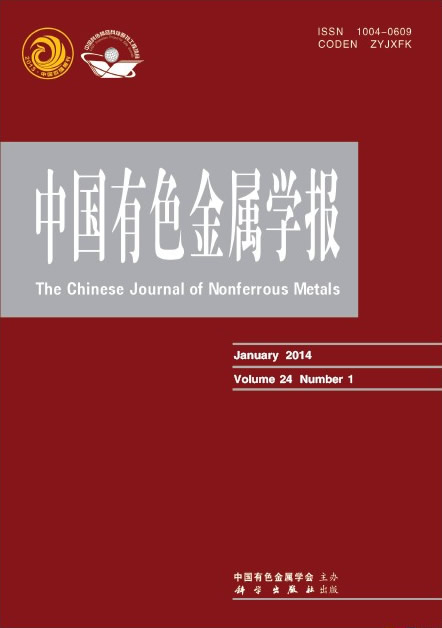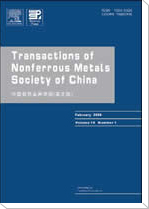中国有色金属学报(英文版)
Transactions of Nonferrous Metals Society of China
| Vol. 19 No. 3 June 2009 |
excess AlF3 concentration and aluminum electrolyte temperature
(1. School of Energy Science and Engineering, Central South University, Changsha 410083, China;
2. Guangxi Branch, Aluminum Corporation of China Limited, Baise 531400, China)
Abstract:The influence of aluminum electrolyte component on its temperature is an important issue within the field of aluminum reduction with pre-baked cells. The characteristic correlation between excess AlF3 concentration and aluminum electrolyte temperature was explored through the modeling of heat and mass transfer processes in industrial pre-baked aluminum reduction cells. A coupled heat/mass-balance model was derived theoretically from the mass and energy balance of an electrolysis cell, and then was simplified properly into a practical expression. The model demonstrates that if environmental temperature and Al2O3 concentration keep constant, the excess AlF3 concentration decreases with the aluminum electrolyte temperature linearly and its decrease rate is dependent on the heat transfer property of aluminum electrolyte, side wall and cell shell. Secondly, experiments were conducted on site with two industrial cells in an aluminum electrolysis plant. Excess AlF3 concentration and aluminum electrolyte temperature were obtained simultaneously together with other parameters such as Al2O3, CaF2, MgF2 and LiF concentrations. Results show that the maximum absolute error between the tested value and the calculated value of excess AlF3 concentration using the proposed model is less than 2%. This reveals that the coupled heat/mass-balance model can appropriately characterize the correlation between excess AlF3 concentration and aluminum electrolyte temperature with good accuracy and practicability.
Key words: aluminum electrolysis; electrolyte temperature; excess AlF3 concentration; energy balance; mass balance; coupled model


